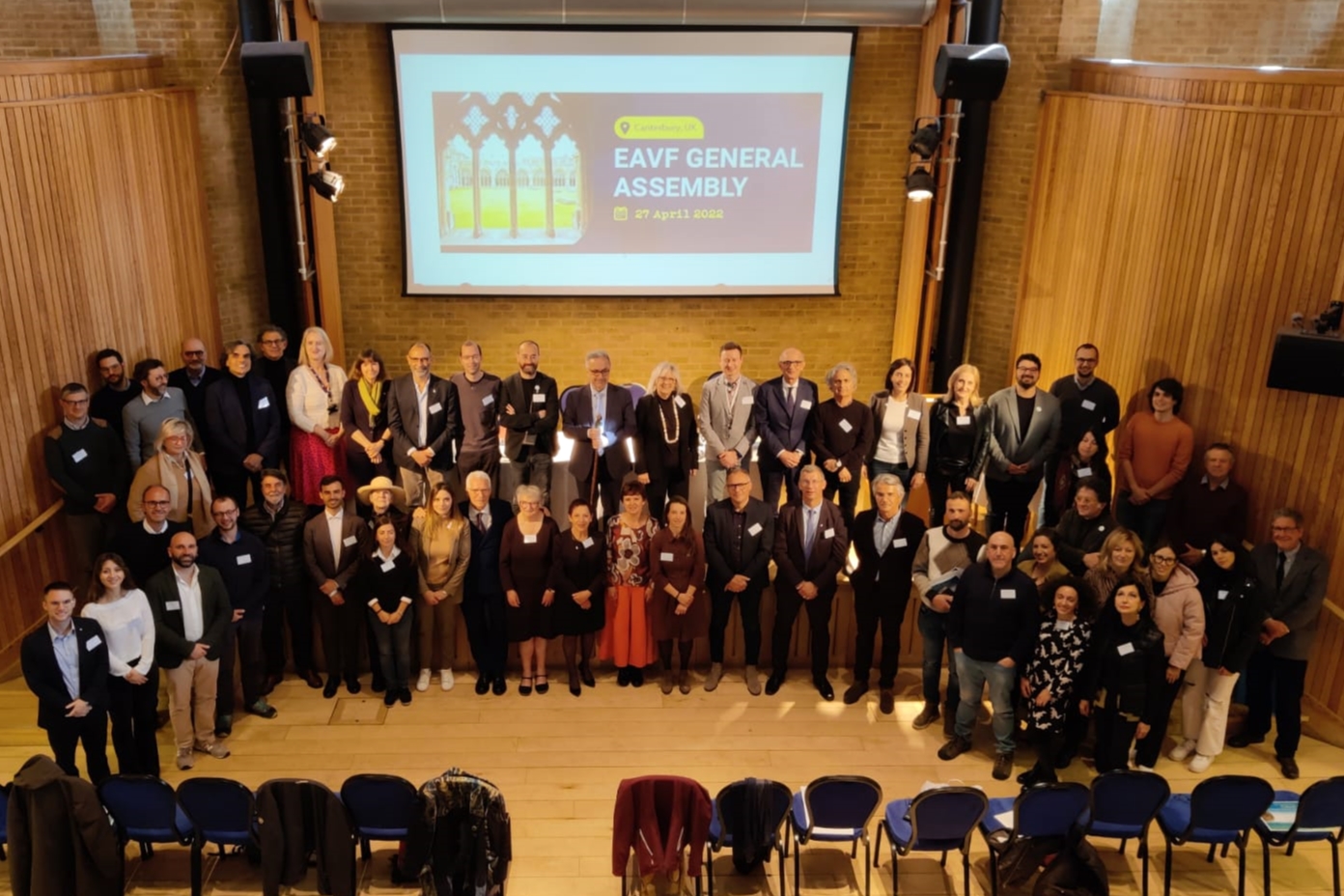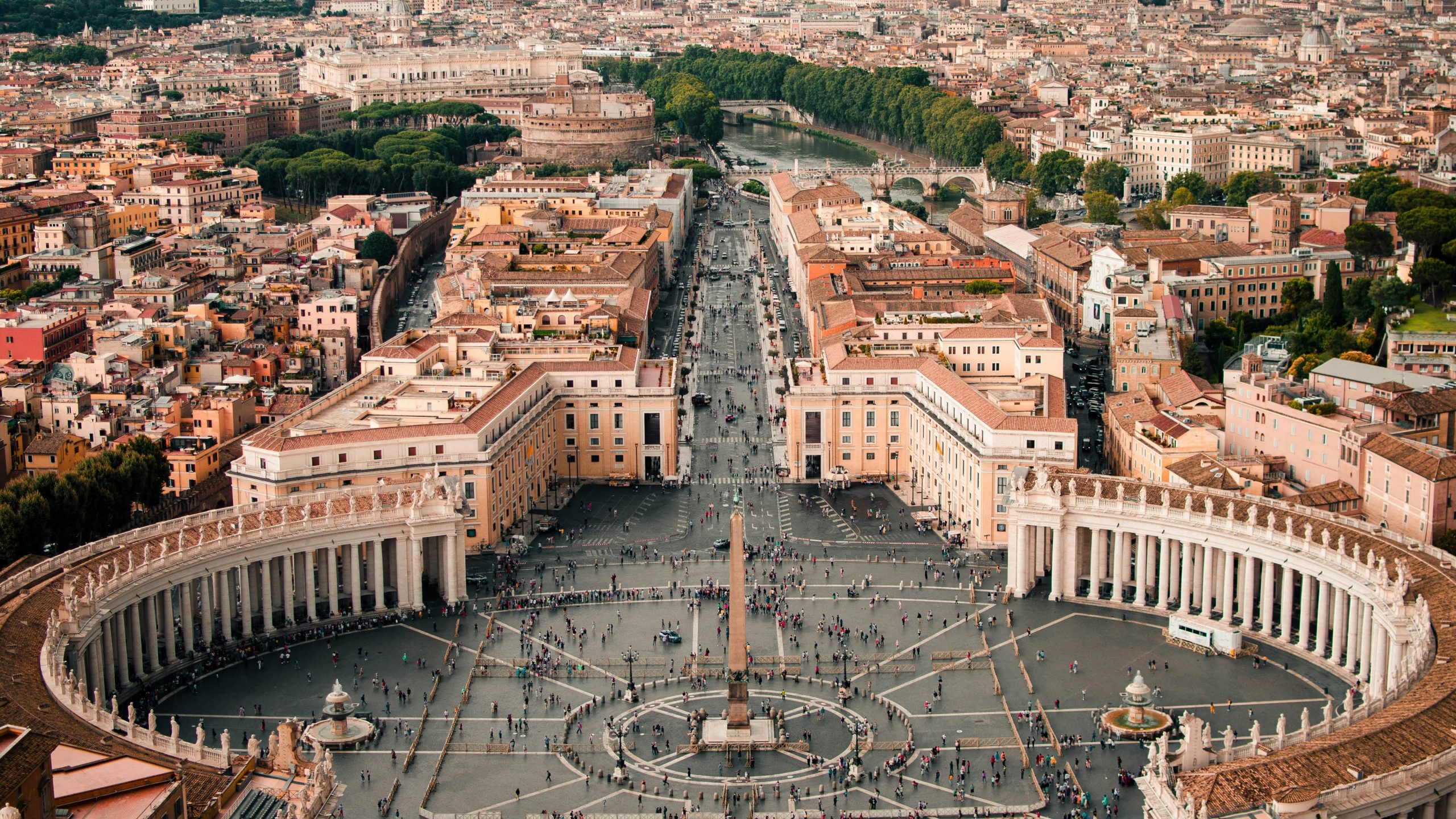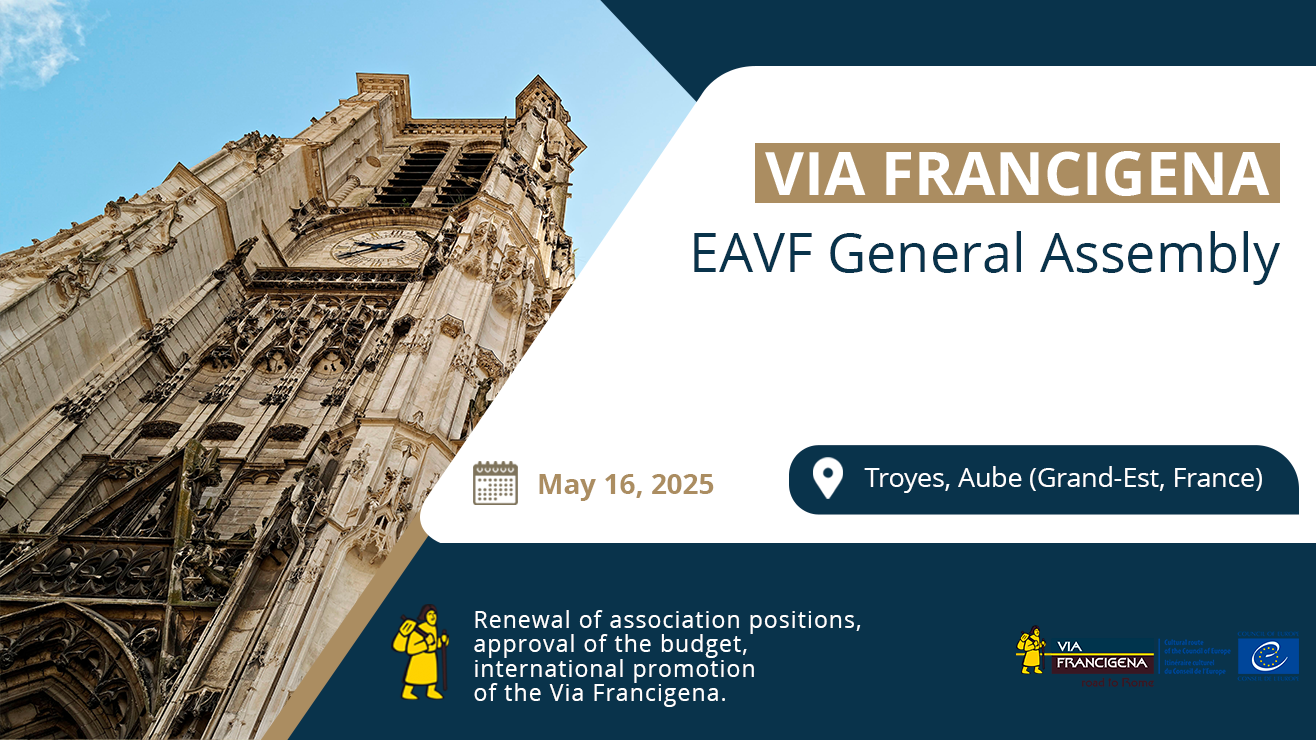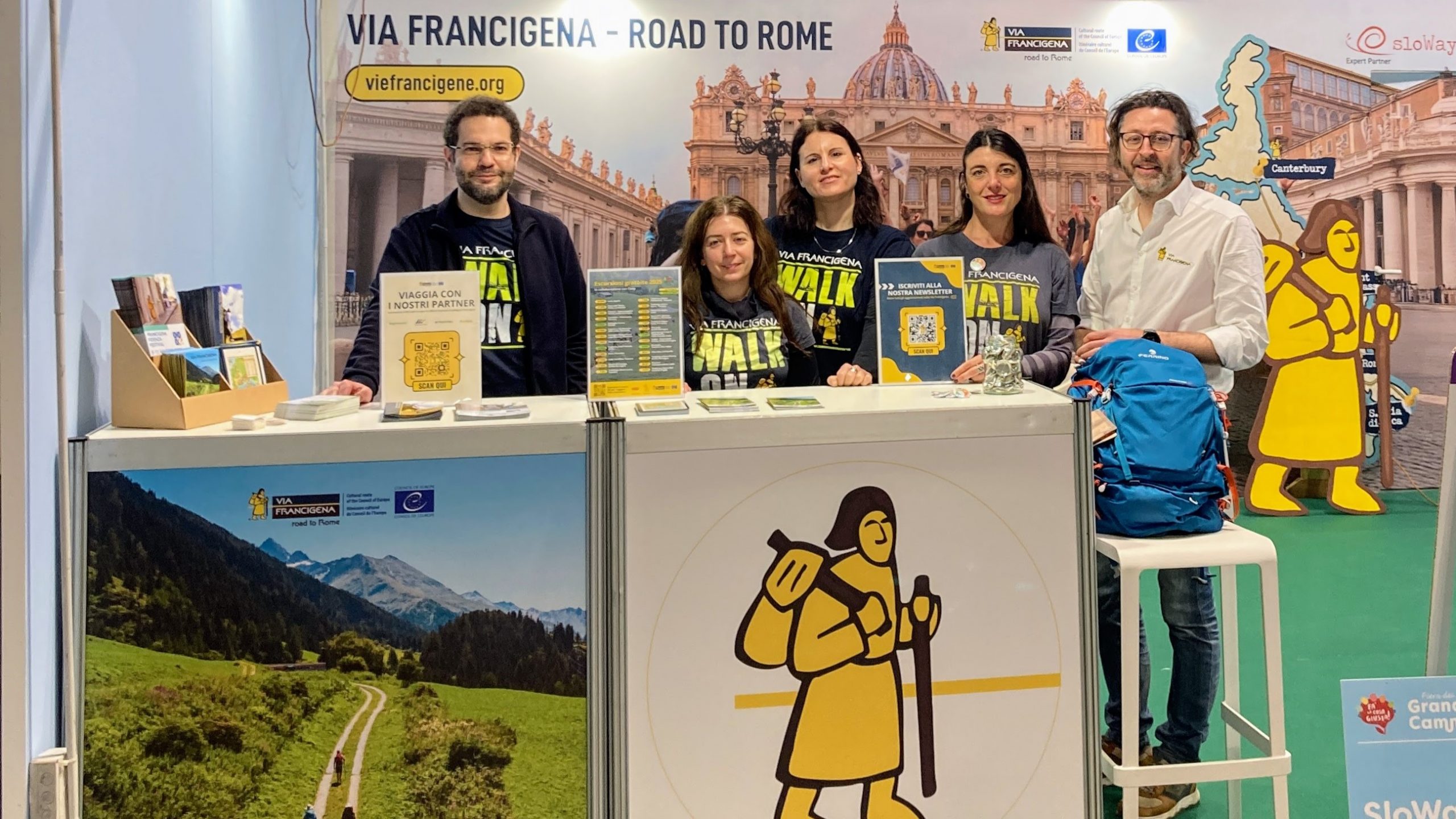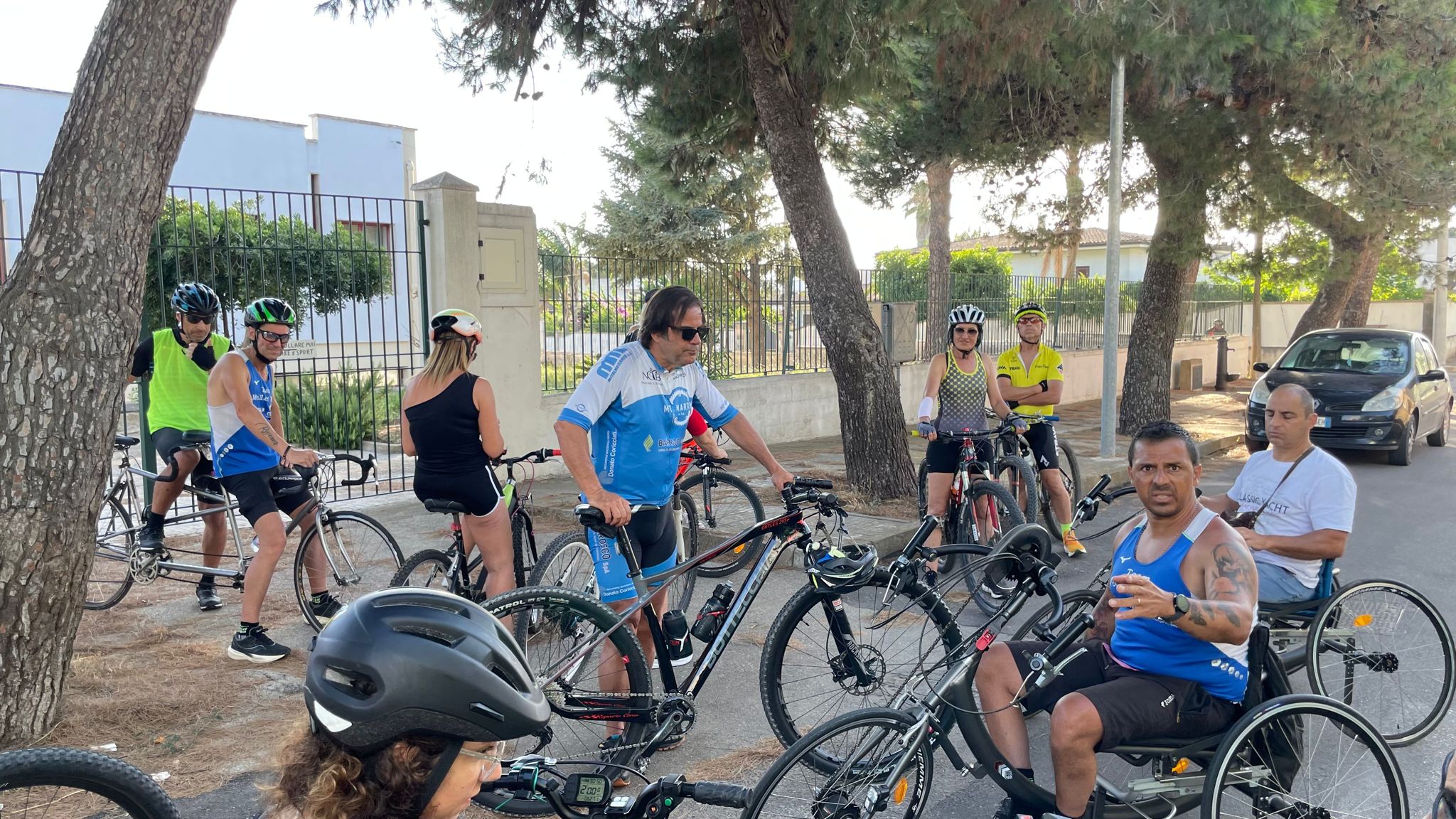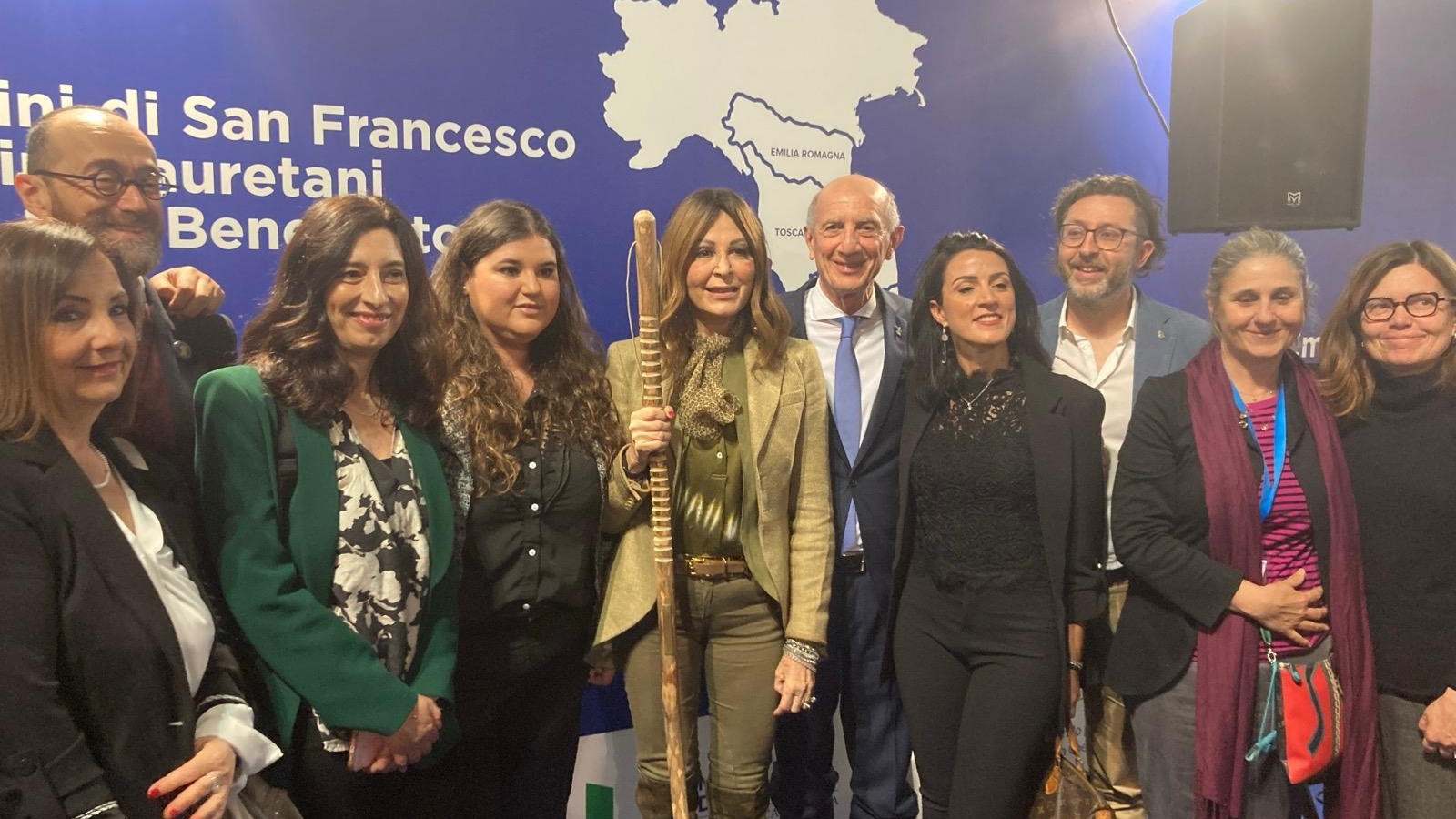The assembly of the European Association of Via Francigena ways took place in Canterbury, symbolic location along the Via Francigena.
For the first time in the history of the EAVF, after 21 years of activity, the general assembly was hosted in the city of Canterbury, whose administration has been a member since 2005.
It was here, the following year, that the stone marking the km zero of the European route from the North Sea to Rome, to the shores of the Mediterranean, was unveiled.
On 27 April, the EAVF assembly was held in the Cathedral Lodge, in front of both the Cathedral and the symbolic km zero stone. Ben Fitter-Harding, City Leader at Canterbury City Council, emotionally welcomed all the participants from the four countries of the Via Francigena: England, France, Switzerland and Italy.
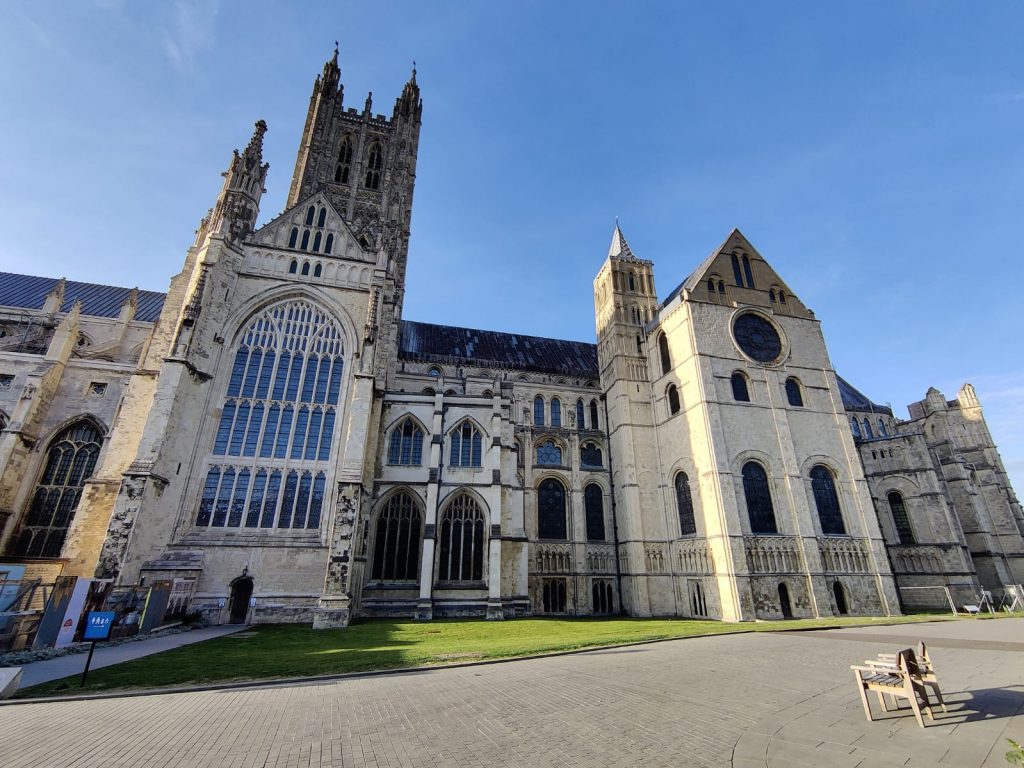
Before the beginning of the meeting, President Massimo Tedeschi recalled the difficult period for Ukraine and Europe:
“The Via Francigena is in fact a “Cultural Route of the Council of Europe” and is thus part of the programme launched in 1987 in Santiago de Compostela. This was two years before important historical events: the fall of the Berlin Wall and the collapse of communism. The programme was born in coherence with the principles and values of the Council of Europe, founded – as we know – on 5 May 1949 with the Treaty of London, to promote, in the immediate post-war period, the principles of democracy, respect for human rights, intercultural dialogue and tolerance.
United Kingdom, France and Italy were the founders of the Council of Europe together with seven other European states. Switzerland joined in 1963; and the Vatican State, the place where Peter’s tomb is located, has the status of ‘permanent observer’. This means that all the states through which the Via Francigena passes are part of the Council of Europe. This is a fact that should be remembered and that we appreciate very much. The Via Francigena unites peoples”.
Important points were addressed on the assembly’s agenda: the economic budget for 2021, which includes the budget for the fantastic event held from 16 June to 18 October 2021 “Via Francigena. Road to Rome 2021. Start again!“; the renewal of the associative offices for the three-year period 2022-2025; the UNESCO candidacy of the Via Francigena and the projects of international cooperation such as rurAllure, Horizon2020 project.
Through the presentation of the docufilm “Road to Rome” we experienced, once again, the great emotions of the long journey across Europe that has connected 658 municipalities. A 20-minute video collecting faces and interviews from the event. In addition to this docufilm, 16 regional videos, 1,000 high-resolution photographs and 55 reels were made available to members.
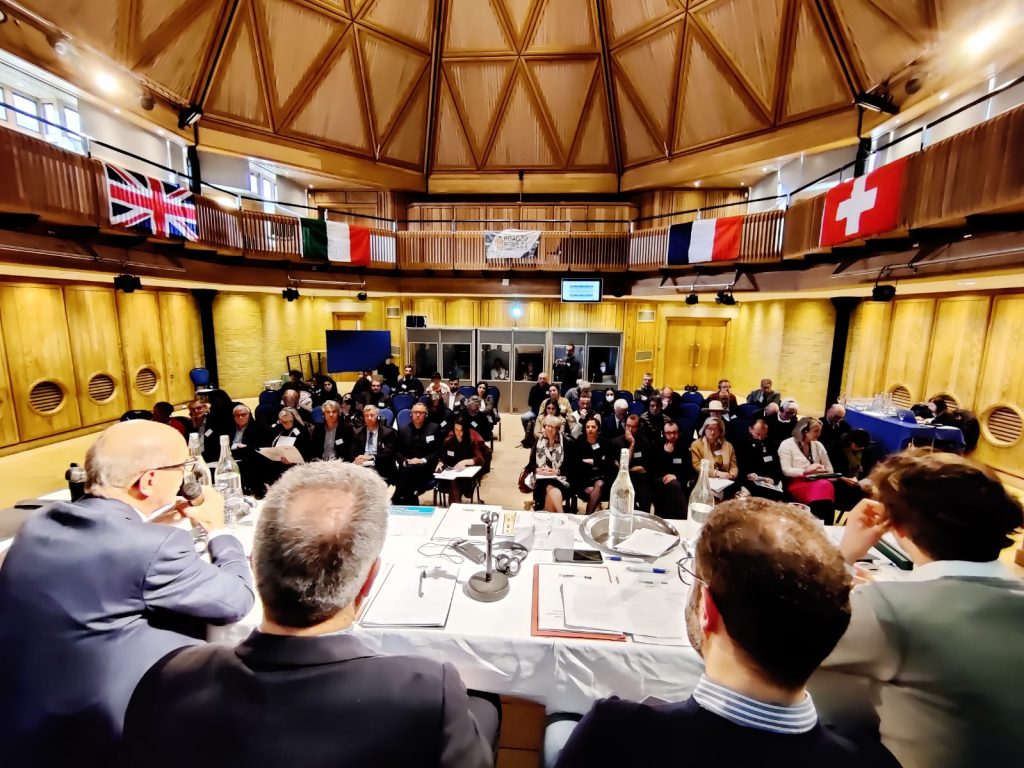
The members confirmed Massimo Tedeschi as EAVF’s president for the next three years. This confirmation was voted for and applauded unanimously by all members. Also confirmed were vice-presidents Martine Gautheron (France), Gaëtan Tornay (Switzerland), Francesco Gazzetti (Italy), Aldo Patruno (Italy) and Francesco Ferrari (Italy), as deputy vice-presidents. The list of vice-presidents now also includes Tricia Marshall (England), Natacha Bouchart (France) and Silvio Marino (Lazio).
The renewal of the offices saw a substantial confirmation of the outgoing Executive Board with some new entries. Provinces and Departments Haute-Marne (Grand-East), Communauté d’Agglomération Grand Besançon (Doubs, BFC), Unione Montana Valle Susa (Piemonte), Lodi (Lombardia), Pavia (Lombardy), Communauté d’agglomération de Béthune-Bruay (Pas-de-Calais, Hauts-de-France). Municipalities: Orbe (Vaud), Aosta (Valle d’Aosta), Ivrea (Piemonte), Pavia (Lombardia), Medesano (Emilia-Romagna), Santo Stefano Magra (Liguria), Pontremoli (Tuscany), Altopascio (Toscana), Monteriggioni (Toscana), Gambassi Terme (Toscana), Montefiascone (Lazio), Acquapendente (Lazio), Donnement (Grand Est), Wisques (Hauts-de-France), Fasano (Brindisi, Puglia). The member regions and the municipalities of Canterbury and Rome are also members by right, as well as the municipalities of Champlitte, Fidenza and Piacenza, which host the offices.
As for the associations, the Confraternity of Pilgrims to Rome (England), the Fédération Française Randonnée (France) and the Gruppo dei Dodici (Lazio, Italy) are members of the Executive Board.
The day following the general meeting was dedicated to the discovery and reconnaissance of the English route section of the Via Francigena. Administrators, volunteers and the EAVF group were on the trail, led by Giancarlo Laurenzi of the Confraternity of Pilgrims to Rome and Peter Morris of North Downs Way, responsible for the maintenance of the route.
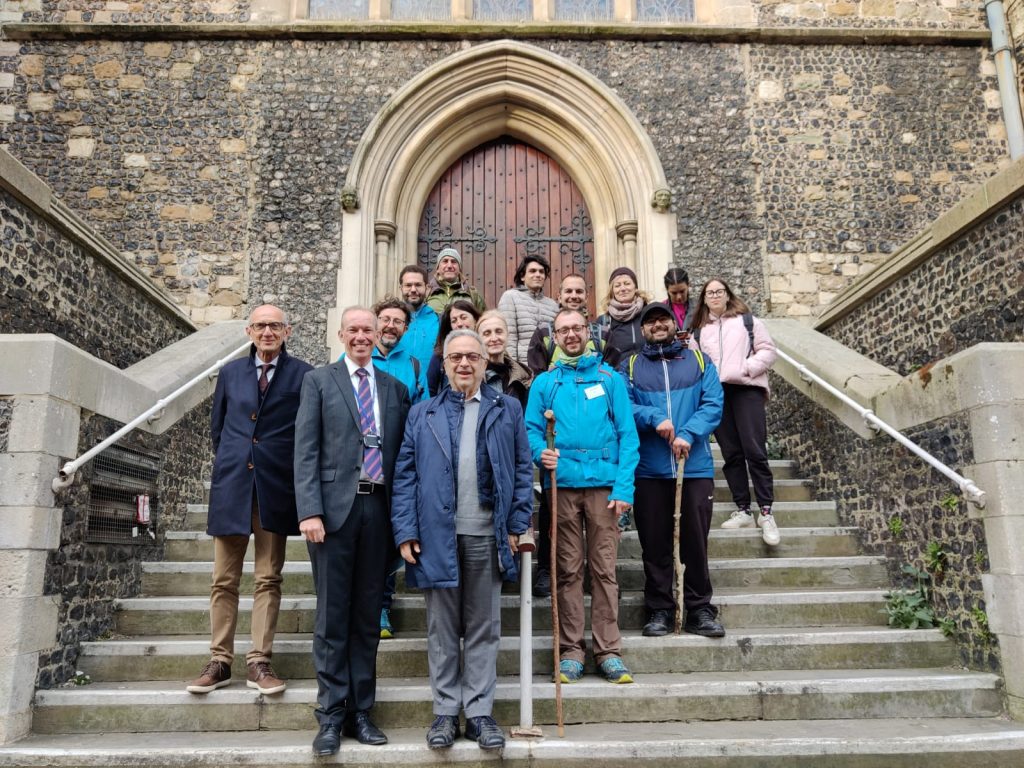
The signage is in excellent condition, with markers, trail signs and tourist information boards. Along the route there are contemporary art installations between Bekesbourne and Shepherdswell. The project has been funded under the Interreg Europe “Green Pilgrimage” scheme, which has provided significant resources for the restyling of the walk. Great news for all ramblers who will walk along this path.



